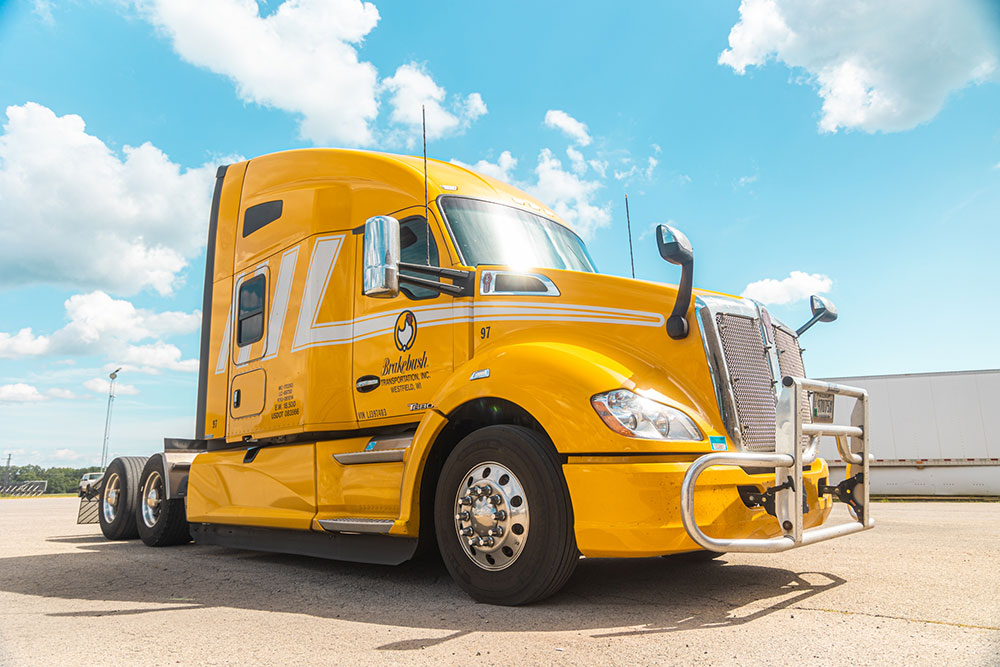Solo vs Team Truck Driving
See Pros and Cons and How to Decide Which is Best for You
If you're looking for your next trucking job, there are two main types of driving you can choose from - solo driving and team driving. Both types of driving have their advantages and disadvantages, and it is essential to understand each in order to make the best decision. Read on to see the pros and cons of each and what factors to consider when choosing between the two.
How to Choose Between Solo or Team Truck Driving
Now that you know the advantages and disadvantages of solo and team driving, there are a few factors you should consider before making your choice. Compile your individual preferences, goals, and unique circumstances. Are you willing to give up certain things if it means more earnings or is peace on the road more important to you?
Questions to Consider
- Do you prefer driving long distances?
- Do you value someone helping manage your time and schedule?
- Is the added earning potential worth sharing a truck?
- Would you be happy being alone for days at a time?

Solo Truck Driving
Solo truck driving is the practice of driving a commercial tractor-trailer alone, without a co-driver.
Solo truck drivers are responsible for managing all aspects of their driving and do not have to share the truck with someone else. They are solely responsible for managing their time, handling long hours, and driving on the road. The American Trucking Association (ATA) in 2019 estimated 68% of the trucking industry’s workforce is solo drivers.
Advantages
- Increased independence and control
- Increased solitude and lack of distractions
- No driver disputes
Disadvantages
- Increased chance of burnout and fatigue
- Limited support system in case of emergencies
- Decreased earning potential
Team Truck Driving
Team truck driving is the practice of 2 drivers working together to operate a commercial tractor-trailer. Team drivers can work together or work on/off where one of the drivers rests or sleeps in a designated sleeping area inside the vehicle. Team drivers can cover more miles in a shorter amount of time, reducing delivery time and increasing productivity.
Advantages
- Increased companionship & collaboration
- Increased earning potential
- Reduced risk of burnout and fatigue
Disadvantages
- Increased chance of driver disputes and disagreements
- Schedules may be mixed
- Decreased amount of solitude
Available Solo & Team Truck Driving Jobs at Brakebush Transportation
Both solo truck driving and team truck driving have their advantages. Regardless of either option you choose, Brakebush has an open position for you. We offer solo and team OTR driving jobs in Texas, Wisconsin, Minnesota, North Carolina, and nationwide.
Enjoy unmatched benefits like competitive pay and employee benefits, bonus earning programs, modern trucks with comfort amenities, and guaranteed regular time at home. And while your mileage may vary, many of our solo and team truck drivers average over $100,000 in annual earnings. Ready to take the next step into a fulfilling career? Apply online through our website or contact us with additional questions.
Frequently Asked Questions on Solo vs Team Driving
Is team driving better than solo driving?
Team driving may be better than solo driving for drivers who want more companionship on the road, less risk of burnout, and increased earning potential. If you have a partner, such as a significant other, you love spending more time with, team driving can be well worth doing.
Do solo or team drivers make more money?
Team drivers in general make more money than solo drivers. It’s important to note team drivers do split their pay with their partner, so you will have to complete more deliveries and cover more miles than if you were solo to obtain greater income.
How far can team drivers go in a day?
Team drivers can go up to 11 hours driving within a 14-hour period, followed by at least 10 consecutive hours off-duty according to the Federal Motor Carrier Safety Administration (FMCSA). Team drivers must also take a 30-minute break after 8 hours of driving time.
